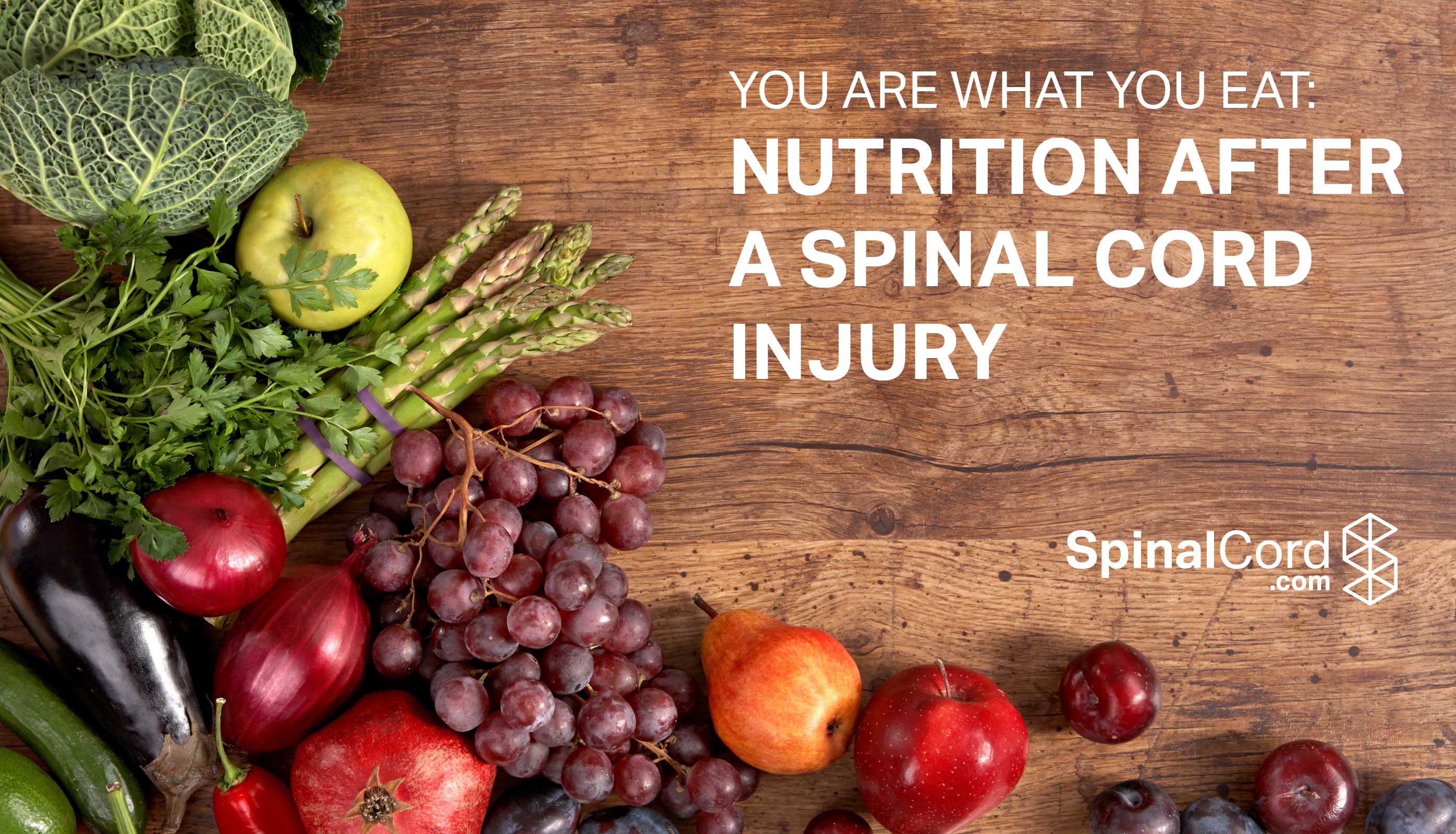You Are What You Eat: Nutrition After a Spinal Cord Injury

We know all too well that we are what we eat and that this is incredibly important because the recommended actions for keeping healthy include eating well and exercising regularly.
When somebody suffers a spinal cord injury (SCI), however, they will likely experience some form of paralysis. And when this is the case, it is understandably a great deal harder, if not nearly impossible, to exercise. So what are the best ways to stay healthy in these situations? Read on to find how to keep up with your nutrition after a spinal cord injury.
Why is Nutrition After SCI So Important?
There are many medical conditions and complications which occur post-SCI that people have no control over - such as muscle tissue loss due to lack of movement, paralysis of limbs or bodily functions, and weaker muscles or bones. Nutrition can play a major role in how these complications further develop, and by maintaining a healthy and balanced diet, these medical conditions can be avoided.
One of the main concerns that people have when they begin their road to recovery is the inability to exercise and stay active. With a decreasing amount of metabolic activity, the body needs less energy to function, coming in the form of calories. An individual can very easily put on weight through consuming foods rich in calories with low nutritional values, as there may be no means to work the calories off.
Having said this, depending on the patient, small bouts of appropriate and manageable exercises, perhaps overseen by a physiotherapist, or a rehabilitation expert, will not only help to build muscle and burn calories but will also release mood-boosting endorphins.
If a person with an SCI does not adhere to good nutritional guidelines, they risk not only gaining weight, but potentially developing diabetes, as well as elevated cholesterol, which can put added pressure on the heart and lead to a plethora of other conditions.
Other Benefits of Quality Nutrition
It is not uncommon to find people with SCIs who experience problems with their bladder and bowels and this is also something to take into account when planning meals and food intake. SCI will make the digestive tract work slower, so eating foods such as fresh fruits, vegetables, and whole grain products will assist in adding fiber into the diet; a dietary material which aids digestion. This is a natural and helpful solution for people who struggle with digestion and constipation to ensure the intestines are kept active.
Pressure sores are also common among people who have difficulty moving or who are confined to long periods in a wheelchair or in bed. These occur when a large pressure is applied to an area of skin for a short amount of time or a smaller weight over a long period of time. The pressure cuts the blood flow to that area of skin, and an ulcer is formed when nutrients are starved.
Being overweight can make this situation more likely as can having conditions that affect blood flow - such as Type 2 Diabetes. By ensuring an individual gets enough protein in their diet, you can reduce the chance of getting these sores, help heal existing ones, and preserve lean body mass. Protein can be found in fish, eggs, poultry, and beans.
So, the Long and Short of It…
As with any quality diet, nutrition after a spinal cord injury is all about balance. That means being sure to include all types of food such as protein, fiber, and complex carbohydrates. As well as avoiding foods that are too rich in calories with no nutritional value. There are many ways within these restrictions to tailor your menu to personal requirements. Patient advocates are a great resource for new survivor’s of a spinal cord injury and their caretakers.
Click the button below to be connected with a recovery coach that can help you with nutritional information and more.
Stay Updated on Advancements On Traumatic Brain &
Spinal Cord Injuries
About the Author





